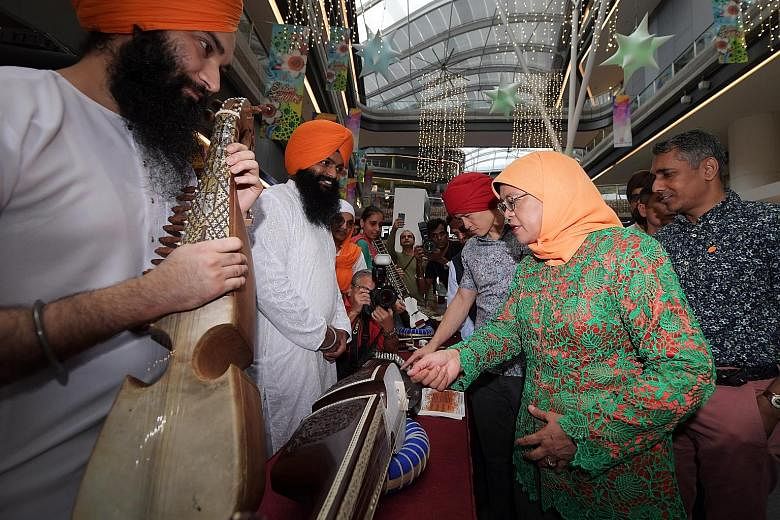During the first two days, there was no sleep and no going home.
As a unit nurse manager at the Communicable Diseases Centre (CDC) in 2003, Mr Harbhajan Singh was on the front lines of the severe acute respiratory syndrome (Sars) epidemic that swept Singapore. It killed 33 people and infected more than 200.
"It was a very frightening time. We were all afraid of getting sick... but I had no choice but to continue to do my best for the patients and the nation," said Mr Singh, 78.
Of the five healthcare workers who died of the contagious illness, two were among the 100 or so nurses under his charge.
During the first two weeks of the national crisis, which he describes as the most challenging of his life, the CDC bore the brunt of the load despite being ill-equipped.
It was the support of colleagues and his faith that got him through, said Mr Singh, a Sikh.
"My religion teaches us that we must do what we can for others, we must come out to help whenever there is a disaster," he said.
-
History of Sikhs in Singapore
-
The Sikh community in Singapore may be relatively small compared with other religious groups, but its roots go back more than 100 years and intertwine with the Republic's colonial history.
Sikhism, founded in the 15th century, originated in the Punjab region in the northern part of the Indian subcontinent.
The first large group of Sikhs - 165 in all - arrived from Punjab in 1881 to form a colonial police force.
Sikhs formed the nucleus of the Straits Settlement security structure under the British government, with many also occupying senior positions in the military.
With the decline of the British empire, Sikh soldiers were given the option to return home, migrate to Britain or remain where they had been deployed.
According to information at the Sikh heritage exhibition, many chose to stay on in Singapore and were employed as security guards, moneylenders and cattle farmers, for example.
Their reputation for being reliable guardians would persist, with some businessmen going as far as to have statues of Sikh guards erected at their tombs to guard them in death.
The exhibition's project lead Malminderjit Singh said Singapore's bicentennial year is a good chance to revisit the stories of Sikhs brought here by the British and who helped to shape the country many now call home.
With 60 years of experience, Mr Singh is the longest-serving nurse in the National Healthcare Group. He continues to work part-time at Tan Tock Seng Hospital, where he began his career at 18.
He is among 19 local Sikh pioneers featured in an exhibition to celebrate the first Sikh Heritage Day, launched by President Halimah Yacob yesterday.
Visitors to the two-day exhibition at Our Tampines Hub will get a taste of traditional Sikh food and music, and can take part in activities such as learning to tie a turban.
Mr Malminderjit Singh, the event's project lead, said the community's first organised outreach event aims to promote greater understanding of Sikh heritage and tradition, as well as highlight the contributions of its members to the building of Singapore.
It was organised as part of year-long celebrations to mark the 550th birthday of the founder of the faith, Guru Nanak.
Many people may lack an understanding of who the Sikhs - a "minority within a minority" in Singapore - are, said Mr Malminderjit Singh, 40. The local Sikh community numbers about 12,000.
While more young people are choosing not to don the turban that serves as a physical identifier for Sikh men, the practice remains an important part of self-identity for many followers, he said.
"Sometimes there is a bit of misperception, because we look distinct and have quite an imposing physical presence, that we are aggressive to some extent.
"But Sikhism is a peace-loving religion that came about in India as an advocate for equality," he added.
Apart from helping to share Sikhism's customs and heritage, the exhibition also showcases the contributions of Singaporean Sikhs in fields ranging from politics to academia and sports.
Prominent figures featured include former Member of Parliament Inderjit Singh, Workers' Party chief and Aljunied GRC MP Pritam Singh, and ex-Nominated MP Kanwaljit Soin, who blazed a trail for women as Singapore's first female orthopaedic surgeon and is a founding member of the Association of Women for Action and Research.
"Despite being a very small community in Singapore, we've played a significant part in contributing to society here, and are very much a part of the social fabric," said Mr Malminderjit Singh.


